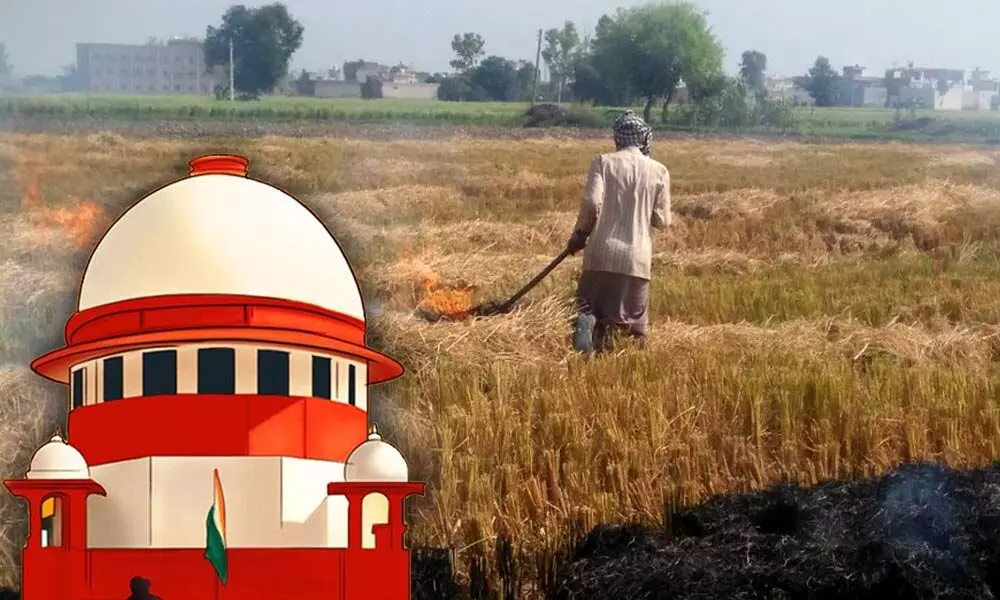Centre's affidavit on air pollution in Supreme Court points at contradictions on stubble burning

Centre's affidavit on air pollution in Supreme Court points at contradictions on stubble burning
The Central government's affidavit in the Supreme Court has brought out two contradictory figures on stubble burning, as Delhi continues to grapple with severe air pollution.
New Delhi: The Central government's affidavit in the Supreme Court has brought out two contradictory figures on stubble burning, as Delhi continues to grapple with severe air pollution.
The affidavit filed by the Joint Secretary in the Ministry of Environment, Forest and Climate Change cited a scientific study carried out to get indicative figures to show average sectoral contributions in PM 2.5 and PM 10 concentrations in Delhi.
According to the study, the PM 2.5 concentration due to agricultural burning is 4 per cent in winter and 7 per cent in summer. For PM 10, agricultural burning is 4 per cent in winter and 7 per cent in summer.Centre's affidavit on air pollution in Supreme Court points at contradictions on stubble burning
The study said PM 2.5 in winter is 85 per cent due to various sectors -- residential (10 per cent), industry (30 per cent), dust (17 per cent) and transport (28 per cent). Similarly, in summer, PM 2.5 concentration is 85 per cent due to the above sectors. The same sectors contribute 85 per cent of PM 10 concentration in winter and 87 per cent in summer.
However, an annexure in the affidavit, which details the minutes of the seventh meeting of the Commission for Air Quality Management in NCR and adjoining areas held on November 14, said, "Efforts need to be intensified to control the instances of stubble burning to minimum as currently the paddy stubble burning has been contributing about 35-40 per cent total pollution load in Delhi-NCR."
Senior advocate Vikas Singh representing the petitioner, Aditya Dubey, said, "The government of India made a wrong statement in the court on Monday over stubble burning as its high-level meeting on Sunday evening had recorded that stubble burning even now is responsible for 35-40 per cent of Delhi's air pollution (paragraph 114 of their affidavit). Construction needs to be regulated rather than banned because it's an ongoing activity which will cause pollution whenever allowed."
The Centre is trying to protect the farmers as they do not want to alienate them during election time, Singh added.
During the Monday hearing on Dubey's petition to stop farm fires, the Supreme Court said farm fires only have a 11 per cent share in Delhi's pollution. A bench headed by Chief Justice N.V. Ramana and also comprising justices D.Y. Chandrachud and Surya Kant said according to Centre's affidavit -- industry, vehicular pollution and dust caused more than 70 per cent of air pollution, and Delhi's air pollution is not due to stubble burning.
"Are you agreeing in principle that stubble burning is not the major cause," Justice Surya Kant asked Mehta. The SC bench questioned whether the "hue and cry" surrounding the stubble burning was without scientific and legal basis.
During the hearing, Justice Chandrachud said, "Now the cat is out of the bag. Farmers' stubble burning is contributing only 4 per cent. It's insignificant."
The top court directed the Centre and state governments to come up with an action plan to curb air pollution in the national capital and scheduled the matter for further hearing on Tuesday.




















